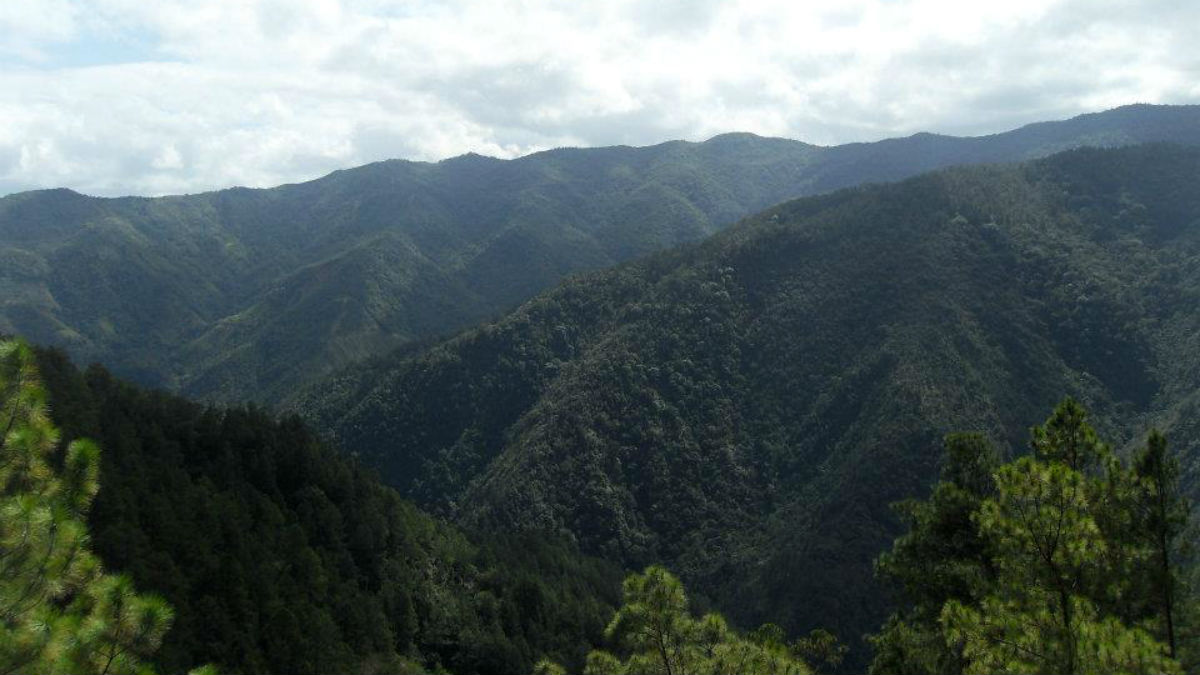Dominican Republic holidays: the luxury guide
White sand, warm water and verdant hills - the Caribbean hotspot has it all

There's many a sun-drenched destination that can claim to be a little piece of paradise on Earth, but with its pristine turquoise waters, vertiginous palm trees and swathes of sandy beaches, the Dominican Republic comes closer than most.
Yet, while it's renowned for its stunning coastline, dig a little deeper and this country reveals itself as one of the Caribbean's most intriguing and multi-dimensional luxury holiday destinations. Once the home of Christopher Columbus's first colony, the Dominican Republic has a wealth of culinary, musical and cultural traditions, all played out against a rich backdrop of history.
"The country's roller-coaster past is writ large in the physical design of its towns and cities," says Lonely Planet. "The crumbling gingerbread homes of Puerto Plata and Santiago remain from more prosperous eras, and scars from decades of misrule are marked by monuments where today people gather to celebrate. New communities have arisen only a few kilometres from the ruins where Christopher Columbus strode and where the indigenous Taíno people left physical traces of their presence carved onto rock walls."
The Week
Escape your echo chamber. Get the facts behind the news, plus analysis from multiple perspectives.

Sign up for The Week's Free Newsletters
From our morning news briefing to a weekly Good News Newsletter, get the best of The Week delivered directly to your inbox.
From our morning news briefing to a weekly Good News Newsletter, get the best of The Week delivered directly to your inbox.
The greatest strip of beaches in the world
But first, the beaches. At the eastern tip of the country lies the world-renowned Punta Cana, also known as the Coconut Coast. A 20-mile ribbon of breathtaking palm-lined sand that fringes the Atlantic Ocean, Punta Cana has become the destination of choice for serious sun worshippers. Indeed, what was once a cluster of fishing villages is now home to the most exclusive luxury resorts in the Caribbean – and for very good reason, says Lonely Planet: "Its beaches do rival those anywhere else in the Caribbean, both in terms of their soft, white texture and their warm aquamarine waters."
Despite the enduring popularity of the coastline, it still offers a true sense of seclusion. "The long fine bronze-coloured sands" of Uvero Alto, along with its "overall lack of development" will delight "anyone wanting an uncrowded beach", says USA Today. And Macao beach, cited by Unesco as one of the best in the Caribbean, is "the beach people often write home about", the paper says.
For those who like to spike their beach holidays with adrenalin, Punta Cana lays on a vast range of watersports. Its warm, gin-clear waters are particularly popular with scuba divers and snorkellers, who have the pick of an array of dive sites - including the 90-year-old wreck of the cargo ship Monica - appropriate for all levels of diving expertise.
A free daily email with the biggest news stories of the day – and the best features from TheWeek.com
The coast offers more traditional charms and diversions, too. The fishing village of Cortecito, for example, offers an "insight into the local way of life", says michelin.com. This is "more how life used to be", says Fodors, "with fisherman bringing in their catch".
Get high
Energetic visitors need not confine themselves to the coast as the rugged, mountainous inland terrain is the perfect playground for the white of knuckle. "There's also some serious trekking to be done in the Dominican Republic," says Wanderlust magazine, with Jarabacoa a "Mecca for adventurous types".

Perhaps the biggest thrill of all comes courtesy of Pico Duarte, the highest mountain in the Caribbean. Lying in the Cordillera Central range, it stands an impressive 9,800ft above sea level, but armed with an expert guide and a decent level of fitness, hikers can expect to conquer it in two days. The reward for such hard work? The chance to discover a lesser-known and truly breathtaking side of the Dominican Republic, one filled with "dazzling scenery, starting with flat woodland flanked by tayota plants – a squash with pear-shaped fruit – and evolving into a mixture of luscious undergrowth, vast pine woods and grasslands", says Wanderlust.
Once in a lifetime
"North Americans and Europeans aren't the only ones who migrate south to the Caribbean in the winter," says Lonely Planet. Every year, between January and March, up to 4,000 humpback whales gather off the Pennsula de Samana to mate and give birth, "meaning a chance to see them up close is virtually guaranteed", says Wanderlust. Tours operate from various points on the north shore of Samana bay during whale-watching season.
Idyllic weather
"April may be the most idyllic month, with perfect weather before the heat of summer comes in May," says Frommer's. "The weather is perfect for beach conditions, in that it's usually dry, and the temperatures are moderated by cooling trade winds blowing in from the northeast."
Although there's little variation in temperature throughout the year, the hurricane season is at its peak in August and September. Don't worry, though, the country is well prepared from storms and visitors can "still enjoy good weather at this time", says Holiday-Weather.com.
Rum deal
Just like their national music, the merengue, the country's native cuisine is a blend of Spanish, African and Taino influences. Santo Domingo, the capital, has recently developed "an interesting food scene", according to the Huffington Post. However, many of the high-end restaurants in this, the oldest city of the New World, have taken an international approach when it comes to their menus.
To get an authentic taste of comida criolla, get out of your comfort zone and head for the family-run restaurants known as commodores. Popular dinner options include "mondongo, a tripe stew strictly for the strong of stomach"; mofongo, a tasty blend of plantains, pork rinds and garlic, and bistec encebollado, grilled steak topped with onions and peppers." Seafood is, of course, plentiful and delicious. "You'll find that the tastiest local fish are the mero (grouper), chillo (red snapper) and carite (king mackerel)."
Wondering what to pair with the delicious delicacies? Dark rum from local distilleries such as Brugal and Bermudez are perennial favourites and form the basis of many cocktails and long drinks. However, for those feeling brave, there's the Mama Juana, a concoction made from local wines, rum, honey and leaves and bark from various trees. "Traditionally, it's supposed to be buried underground for at least three months, then laid out in the sun for another three before consumption." says Rough Guides. You have been warned.
Fiesta!
Despite its famously laid-back pace of life, the Dominican Republic thrums with the energy of its many regional festivals, or fiestas patronales. These celebrations honour the patron saint of the town or city in question and fall upon the saint's day – although the celebrations frequently go on for nine nights thereafter.
Over the years, the celebrations themselves have evolved, with the fiestas patronales in the more remote parts of the country remaining true to their roots as syncretic religious ceremonies. These tend to feature "large processions carrying an icon of the saint, religious folk songs accompanied by enormous palos drums fashioned from tree trunks, Haitian gaga music employing long wooden tubes and keyless metal trumpets that are both blown through and rattled with a stick, and spirit possession", says Rough Guides.
By contrast, the festivals that take place in the major towns and tourist areas have since "shed this religious affiliation" in favour of a energetic street party atmosphere. After all, the residents of the Dominican Republic are renowned for their party spirit – and in this beautiful part of the world, they have much to celebrate.
The article above is an independent travel guide produced by the The Week's editorial team and funded by Thomson.
[[{"type":"media","view_mode":"content_original","fid":"90613","attributes":{"class":"media-image"}}]]
-
 Antibiotic resistance: the hidden danger on Ukraine’s frontlines
Antibiotic resistance: the hidden danger on Ukraine’s frontlinesUnder The Radar Threat is spreading beyond war zones to the ‘doorstep’ of western Europe
-
 ‘Capitalism: A Global History’ by Sven Beckert and ‘American Canto’ by Olivia Nuzzi
‘Capitalism: A Global History’ by Sven Beckert and ‘American Canto’ by Olivia NuzziFeature A consummate history of capitalism and a memoir from the journalist who fell in love with RFK Jr.
-
 Who will the new limits on student loans affect?
Who will the new limits on student loans affect?The Explainer The Trump administration is imposing new limits for federal student loans starting on July 1, 2026